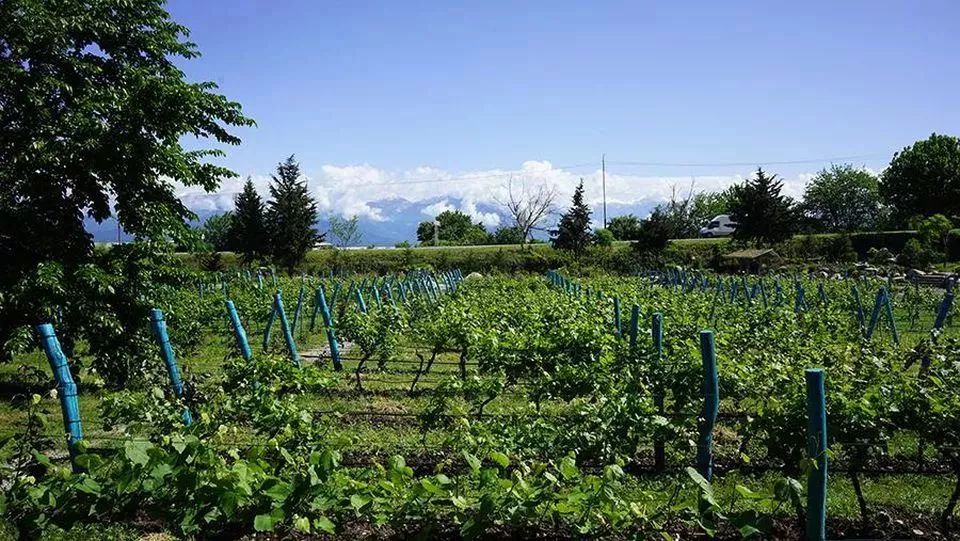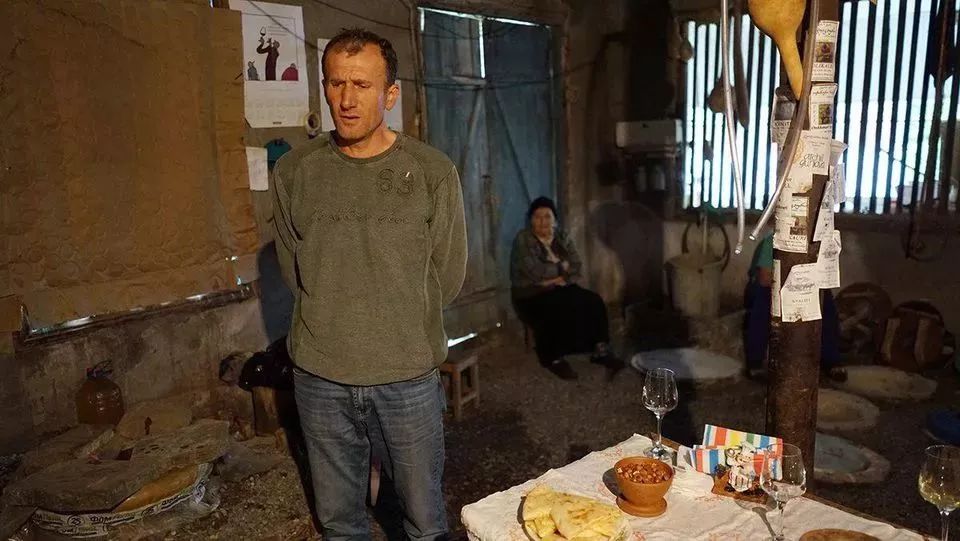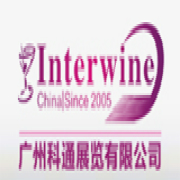资讯 格鲁吉亚葡萄酒的前世今生:13世纪古堡?红酒发源地? 这个国家远比想象中更具魅力
When archaeologists last year found traces of winemaking on 8,000-year-old pottery shards in Georgia, the tiny former Soviet republic claimed the crown as the world’s oldest wine producer.
去年,当考古学家在格鲁吉亚8000年历史的陶器碎片上发现酿酒痕迹时,这个前苏联加盟共和国宣告自己是世界上最古老的葡萄酒生产国。
It was an affirmation for many long-standing fans of the country and its winemaking tradition, which is ancient and, at the same time, a grassroots movement. Georgia’s hallmark is white wines that stay in contact with their skins, stalks and pips for months and further ferment in huge clay amphorae (qvevri) buried in the ground. It’s a trend that’s caught on elsewhere in the world, but its deep roots lie in Georgian culture.
这是对格鲁吉亚葡萄酒迷和格鲁吉亚传统来说是一种欣喜。酿酒传统历史悠久,同时也是一场草根运动。格鲁吉亚代表是白葡萄酒,它能与果皮、果梗和果核保持数月的接触,并在埋在地下的巨大陶罐(qvevri)中进一步发酵。虽然这种方法在其他国家也开始流行,但起源在于格鲁吉亚文化。

格鲁吉亚Shumi酒庄葡萄园
“What’s happening now is a revival,” says Alice Feiring, author of For the Love of Wine: My Odyssey Through the World’s Most Ancient Wine Culture. A natural wine advocate, Feiring has long traveled in the country, and her 2016 book—a love letter to Georgian people and traditions—charts the modern (re) discovery of the wine culture and some of the struggles to remain true to its heritage.
《爱酒之旅:世界最古老的葡萄酒文化中的探索》一书的作者Alice Feiring表示:“这是一场复兴运动。”作为一名天然葡萄酒的倡导者, Feiring长期以来一直在格鲁吉亚旅行。她在2016年出版的书《给格鲁吉亚人民和传统的情书》记录了人们对葡萄酒文化的复兴,以及为保持其传统而进行的努力。
Noel Brockett, director of sales at the Georgian Wine House in Washington, D.C., who attends industry events dressed in a chokha, the traditional long woolen coat adorned with ornamental silver cartridges worn by Georgian men, says wine culture runs deep in the country.
Noel Brockett是华盛顿一家格鲁吉亚葡萄酒屋销售总监,他身穿格鲁吉亚男子穿的传统长羊毛外套chokha参加行业活动,上面有银质装饰。他说,格鲁吉亚的葡萄酒文化在这个国家根深蒂固。
“There’s something very particular about how Georgians love wine ,” he said. “It’s a little eccentric but then you start looking into it and once you do, you’re truly amazed—it’s such an integral part of the culture and everyday life.”
“格鲁吉亚人超级喜爱葡萄酒。”他说,“这听起来有点夸张,但当你开始研究它时,你会真正感到惊讶——它已是文化和日常生活中不可或缺的一部分。”
Traditional winemaking in Georgia has always been a home endeavor, infused with history, religion and mythology, and references dating to the fourth century. An oft-told legend relates how soldiers wove a piece of grapevine into the chain mail protecting their chests, so when they died in battle, a vine sprouted not just from their bodies, but their hearts.
格鲁吉亚传统酿酒业一直以来都是一项家庭活动,充满了历史、宗教和神话色彩,而且可以追溯到四世纪。一个流传已久的故事:士兵们把一根葡萄藤缝进锁在胸前的链子里,以保护自己的胸部,当他们阵亡的时候,葡萄树就从他们的身体上长出来,而且是从他们的内心长出来。
“Even where we think a culture like France or Italy is so wine-centric, Georgians just take it to a whole different level—much deeper than what we’re exposed,” said Taylor Parsons, an Los-Angeles sommelier, who has visited Georgian wine country three times.
洛杉矶的侍酒师Taylor Parsons曾三次造访格鲁吉亚的葡萄酒之国,他说,“即使相比法国或意大利这样的葡萄酒文化浓郁的国家,格鲁吉亚人也把葡萄酒上升到了一个完全不同的层面—比我们所接触到的要深刻得多。”
Despite boasting 8,000 vintages, Georgian wines have come onto the world wine map only recently—thanks in part to the amber-wine trend, growing interest in natural wines, and improvements in the vineyard and winery.“Georgia needed to change at the same time that these other things were trending,” says Master of Wine Lisa Granik, who serves as market adviser to Georgia’s National Wine Agency.
尽管格鲁吉亚葡萄酒拥有8000年的历史,但直到最近才进入世界葡萄酒版图,这在一定程度上要归功于陶罐酒的发展趋势、人们对天然葡萄酒越来越感兴趣,以及葡萄园和酿酒厂的技术改进。“格鲁吉亚同时需要根据其他市场趋势做出改变。”葡萄酒大师Lisa Granik说,她也是格鲁吉亚国家葡萄酒局的市场顾问。
But geopolitical reasons were at play, too. Wedged in between the Caspian and Black seas, winemaking in the small republic suffered under Soviet rule until 2003. Historic plantings were pulled up for the production of cheap factory wines. Civil war and then a Russian embargo on all Georgian wine from 2006 to 2013 further stalled a migration to quality. By the time Georgia’s economy was functioning, “the wine quality was swill—at least what was commercially produced,” says Granik.
但地理政治因素也有一定的影响。这个位于里海和黑海之间的小共和国的酿酒业在2003年之前一直处于苏联的统治之下。为了生产廉价的工厂葡萄酒,一些历史悠久的种植园被拔地而起。内战以及2006年至2013年俄罗斯对格鲁吉亚葡萄酒的禁运,进一步阻碍了葡萄酒向高品质葡萄酒的发展。当格鲁吉亚经济开始复苏时,“葡萄酒的质量依旧处于工业生产水平。”Granik说。
“What [the government] wanted were modern temporary wines that they could sell in volume and the state supported converting these large cooperatives into modern wineries,” she explained.
她解释说:“(政府)想要的是能够大批量销售的工业葡萄酒,国家支持将这些大型合作社转变为现代酒厂。”

Archil Guniava 在他的车库酒庄
Georgia’s wine heritage was revived when people such as John Wurdeman saw its unique place in the world. The American was already living in the country as a ex-pat painter when he was introduced to the local wine by Gela Patalishvili, an eighth-generation winemaker in Kakheti—Georgia’s ground zero for winemaking (nearly three-quarters of the country’s production). Together they founded thePheasant’s Tears winery in 2007, jumpstarting both the revival and preservation of Georgian wine culture.
当John Wurdeman等人发现格鲁吉亚葡萄酒在世界上的独特地位时,格鲁吉亚葡萄酒开始复兴了。2007年,这位旅格画家的美国人与卡赫基产区的第八代酿酒师Gela Patalishvili共同创建了山鸡之泪酒庄(Pheasant’s Tears),推动了格鲁吉亚葡萄酒文化的复兴和保护。

Central to that is the qvevri—the large egg-shaped clay vessels in which grapes are fermented with their raw materials, giving rich, structured, tannic wines. The same method for making red wines is used for the whites, yielding amber-colored results. No matter the color, the vessels are sealed and buried in the ground.
其中最重要的因素是陶罐—一种巨大的蛋形粘土容器,葡萄在里面发酵,酿造出结构丰富、单宁强劲葡萄酒。白葡萄酒的酿造方法与红葡萄酒相同,生产出琥珀色葡萄酒。无论什么颜色,容器都是密封的,埋在地下。
Bolstered by well-attended tasting events such as the international RAW Wine Fair, and the Zero Compromise and New Wine festivals held in Tbilisi, Georgian winemakers now range from the traditional to a new wave of ex-pats such as Vincent Jullien and Guillaume Gouerou, two Frenchmen who created Lapati. Here they produce about 12,000 bottles (sourced from an old Soviet factory, as many things in Georgia are adaptively reused) for markets like Japan and Denmark and hip wine bars in the United States. On trend is their “pet-nat” made from the Chinuri grape grown on high-elevation chalky soils, which posed the question of terroir—a concept with which Georgian winemakers are still grappling.
随着频繁亮相于品鉴活动,如国际原酒博览会和在第比利斯举行的新酒节,现在格鲁吉亚酿酒师队伍从本土扩大到外籍人士,如Vincent Jullien 和 Guillaume Gouerou两个法国人创建了Lapati酒庄,年产约1.2万瓶葡萄酒,销售日本、丹麦和美国的时髦酒吧等。受欢迎的是酒庄的“pet-nat”葡萄酒,由生长在高海拔白垩土上的奇努里葡萄制成,这就引出风土的问题,也是格鲁吉亚的酿酒师仍在研究的。

Vincent Jullien(左)and Guillaume Gouerou 在Lapati酒庄
“The terroir of Georgia is new—it’s just happening now,” Jullien said. And, as someone who learned winemaking in Beaune, he should know a thing or two about it.
“格鲁吉亚的风土是一种新的事物-它现在就在形成”,Jullien 在伯恩丘学习了酿酒,多多少少对此有一定的了解。
Woolf says winemakers old and new are still just figuring out the basics, like terroir and which grapes are best suited to their territories. Increasingly, he says, the results are worthy and noticeable.“Georgia is still going through a process where people are trying to improve the vineyards that were in a terrible state, and there’s still a lot of producers are not fully in control of their quality,” he said. “You can tell when you encounter a producer who really understands the viticulture part of the equation and it’s just extraordinary how different that can be.”
葡萄酒作家Simon J. Woolf说,新老酿酒师还在研究最基本的问题,比如风土,以及哪种葡萄最适合他们的产区,研究结果越来越有价值和引人注目。他说:“格鲁吉亚仍在经历一个过程,人们正在努力改善葡萄园的状况,这些葡萄园以前状况比较糟糕,但即使这样还是有很多生产商不能完全控制它们的质量。”“如果生产者对葡萄园管理有一定的了解将会有很大的改变。”
评论
相关展会
InterwineChina 2021中国(广州)国际名酒展
第24届中国(广州)国际名酒展-夏季展
中国(广州)国际名酒展-秋季展/ 第二十三届广州国际名酒展
第22届中国(广州)国际名酒展(Interwine China 2019)
第21届中国(广州)名酒展
Interwine China 2018中国(广州)国际名酒展-春季展
Interwine Beijing 2018 科通(北京)国际葡萄酒烈酒展览会
中国(广州)国际名酒展(Interwine 2017)
Interwine Beijing 2017 科通(北京)国际葡萄酒烈酒展览会

广州科通展览有限公司
张小姐
发表资讯250篇
最近内容
INTERWINE 1000+展商名录大曝光!
阿根廷门多萨两省长亲临 11.9-11 Interwine
11.9-11 Interwine 60+精彩活动攻略大全


